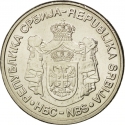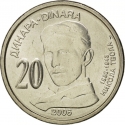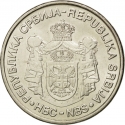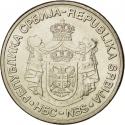You are about to finish your registration. Please check your mailbox (including spam folder). There should be a letter with a confirmation link. Check setting to make sure that your e-mail address is correct.
Send letter againDescription
Mihajlo Idvorski Pupin (1858–1935), also known as Michael Pupin, was a Serbian physicist, physical chemist and philanthropist based in the United States.
Pupin is best known for his numerous patents, including a means of greatly extending the range of long-distance telephone communication by placing loading coils (of wire) at predetermined intervals along the transmitting wire (known as "pupinization"). Pupin was a founding member of National Advisory Committee for Aeronautics (NACA) on 3 March 1915, which later became NASA, and he participated in the founding of American Mathematical Society and American Physical Society.
In 1924, he won a Pulitzer Prize for his autobiography. Pupin was elected president or vice-president of the highest scientific and technical institutions, such as the American Institute of Electrical Engineers, the New York Academy of Sciences, the Radio Institute of America, and the American Association for the Advancement of Science. He was also an honorary consul of Serbia in the United States from 1912 to 1920 and played a role in determining the borders of newly formed Kingdom of Serbs, Croats and Slovenes.
In 1932 Mihajlo Pupin was awarded by the John Fritz Medal. The John Fritz Medal has been awarded annually since 1902 by the American Association of Engineering Societies (AAES) for "outstanding scientific or industrial achievements". The medal was created for the 80th birthday of John Fritz, who lived between 1822 and 1913.
Obverse

|
Depicts coat of arms of Serbia (with curved bottom of top crown, 2004–2010) surrounded by the country name (above) and an abbreviation of the National Bank of Serbia (NBS) written in Latin and Cyrillic letters. РЕПУБЛИКА СРБИЈА-REPUBLIKA SRBIJA |
|---|---|
Reverse

|
Depicts a portrait of Mihajlo Pupin, value on the left and above, name, dates of birth and death, on the right, date of issue below. ДИНАРА-DINARA |
| Edge |
5 reeded segments with 19 reeds each |
20 Dinara
2nd Coat of Arms
80th Anniversary of Mihajlo Pupin’s John Fritz Medal
KM# 62
80th Anniversary of Mihajlo Pupin’s John Fritz Medal
Characteristics
| Type | Commemorative Issue (Circulating) |
| Material | Copper Nickel Zinc |
| Weight | 9 g |
| Diameter | 28 mm |
| Thickness | 2.06 mm |
| Shape |
|
| Alignment | Medal |
| Mint |
Institute for Manufacturing Banknotes and Coins (ZIN)
|







